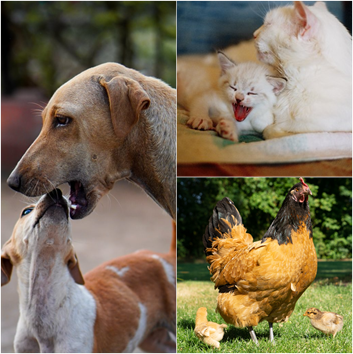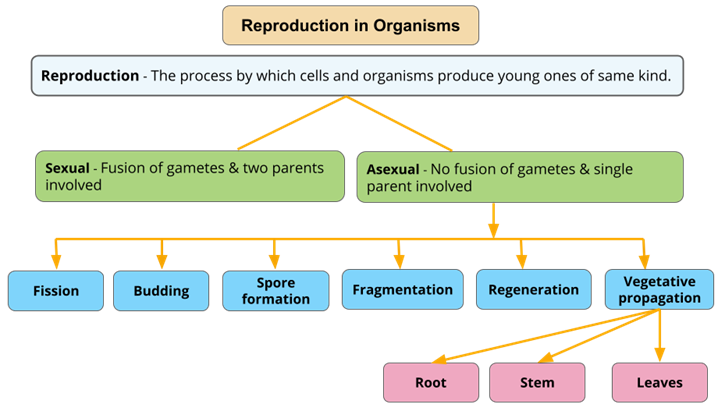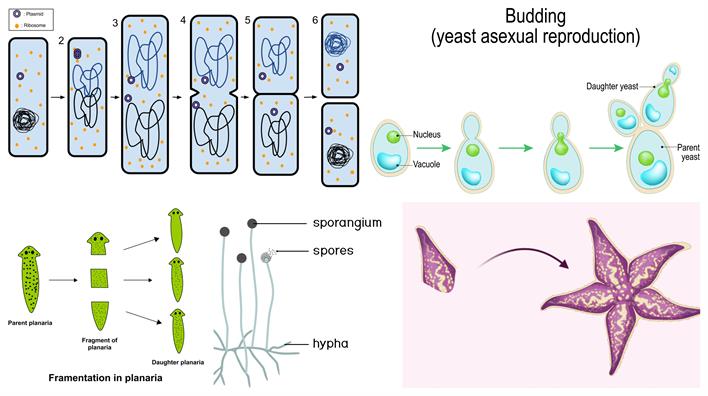PDF chapter test TRY NOW
Production of a new organism from an existing organism (parent organism) of the same kind is called reproduction.
The process involves the creation of a neworganism that is essential for the survival of a particular species.
Reproduction is necessary for the continuation of the species to maintain the continuity of the species across various generations. The new organism is called the young one.
Example:
Cats reproduce by giving birth to kittens. Dogs reproduce to give birth to puppies, and hens reproduce to give birth to chicks.

Reproduction and it's types:

Types of reproduction
The two modes of reproduction are :
- Sexual reproduction
- Asexual reproduction
Sexual Reproduction:
Production of a living organism by the fusion of gametes or sex cells is called sexual reproduction.
In a male, the gametes or the sex cells are called sperms, while the female gametes or the sex cells are called eggs or ovum.
Example:
Dog, cat, fish, frog, and humans reproduce through sexual reproduction.
Asexual Reproduction:
Production of a new offspring that involves only a single parent without the involvement of sex cells is called asexual reproduction.
It is called asexual reproduction as it does not involve the sex cells for the production of a new organism. The young ones that are produced is an exact copy of the parent.
Example:
Binary fission in Amoeba and Euglena
Budding in Hydra and Yeast
Spore formation in Fungi like Mushroom
Fragmentation in Spirogyra and Planaria

Different forms of asexual reproduction: Binary fission, Budding, Fragmentation, Spore formation, Regeneration
Reference:
https://upload.wikimedia.org/wikipedia/commons/thumb/b/b1/White_cat_and_kitten.jpg/512px-White_cat_and_kitten.jpg
https://pixahive.com/photo/a-dog-and-puppy/
Reference:
